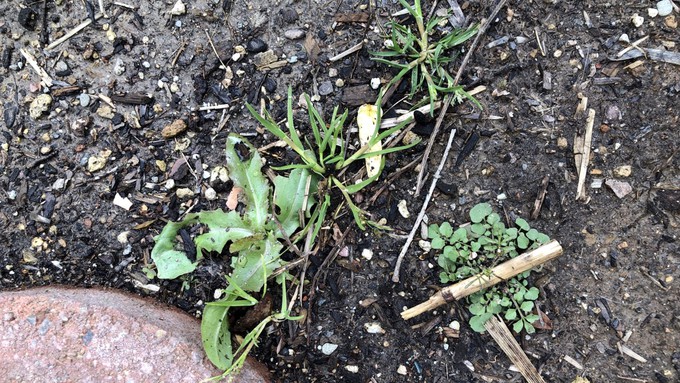
March arrives with more cold, damp weather

Winter showers bring ... weeds. Get them out while they're small! Kathy Morrison
March can be blustery (as we’ve already seen this month) and unpredictable. When gardening, plan accordingly; be ready for spikes in temperature, both up and down.
Be patient, too. Some afternoons may feel like spring, but the soil is still mighty cold – bad for root development. And that soil is unlikely to warm up much this week.
According to the National Weather Service, Sacramento will stay rainy through Wednesday. Forecast highs are 52 or 53 degrees every day this week but Thursday when we “warm” to 55. (The forecast low early Thursday morning: 32 degrees.) Friday’s forecast: More rain and 53 degrees.
That’s more than 10 degrees below average. Normal for this week in Sacramento: High of 66 degrees and low of 44.
March also can see rapid warm-ups. In March 2022, we enjoyed six consecutive days of 80-degree weather peaking at a record 86 on March 26. (That was just three weeks after Sacramento set a record low of 35 on March 6.) Spring will be here for real before you know it.
* No matter how tempting, don’t transplant tomatoes outdoors yet. If seedlings need more room, transplant them into 1-gallon pots lined with newspaper; that will help warm their growing roots.
* Fertilize roses, annual flowers and berries as spring growth begins to appear. Feed roses with a balanced fertilizer (such as 8-8-8, the ratio of nitrogen, phosphorus and potassium available in that product).
* If aphids are attracted to new growth, knock them off with a strong spray of water or insecticidal soap. To make your own “bug soap,” use two tablespoons of liquid soap – not detergent – to 1 quart of water in a spray bottle. Shake it up before use. Among the liquid soaps that seem most effective are Dr. Bronner’s Pure-Castile Soaps; try the peppermint scent.
* Pull weeds now! Don’t let them get started. Take a hoe and whack them as soon as they sprout.
* Start preparing vegetable beds. Spade in compost and other amendments.
* Pick up browned camellias and fallen flowers to help corral blossom blight.
* Cut back and fertilize perennial herbs to encourage new growth.
* In the vegetable garden, transplant lettuce, collards and kale.
* Seed chard and beets directly into the ground.
* Before the mercury starts inching upward, this is your last chance to plant such annuals as pansies, violas and primroses.
Comments
0 comments have been posted.Sacramento Digs Gardening to your inbox.
Sites We Like
Garden Checklist for week of July 21
Your garden needs you!
* Keep your vegetable garden watered, mulched and weeded. Water before 8 a.m. to reduce the chance of fungal infection and to conserve moisture.
* Feed vegetable plants bone meal, rock phosphate or other fertilizers high in phosphate to stimulate more blooms and fruiting. (But wait until daily high temperatures drop out of the 100s.)
* Don’t let tomatoes wilt or dry out completely. Give tomatoes a deep watering two to three times a week.
* Harvest vegetables promptly to encourage plants to produce more. Squash especially tends to grow rapidly in hot weather. Keep an eye on zucchini.
* Pinch back chrysanthemums for bushy plants and more flowers in September.
* Remove spent flowers from roses, daylilies and other bloomers as they finish flowering.
* Pinch off blooms from basil so the plant will grow more leaves.
* Cut back lavender after flowering to promote a second bloom.
* It's not too late to add a splash of color. Plant petunias, snapdragons, zinnias and marigolds.
* From seed, plant corn, pumpkins, radishes, winter squash and sunflowers.